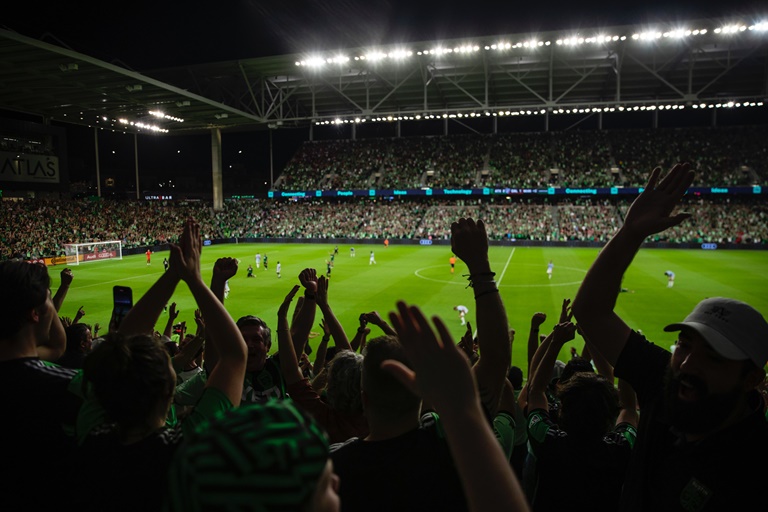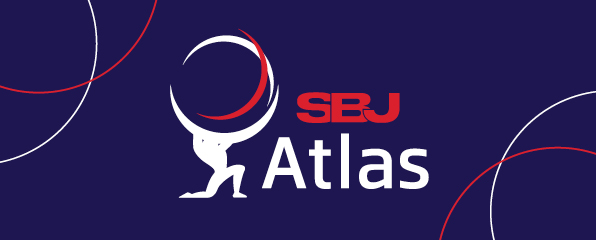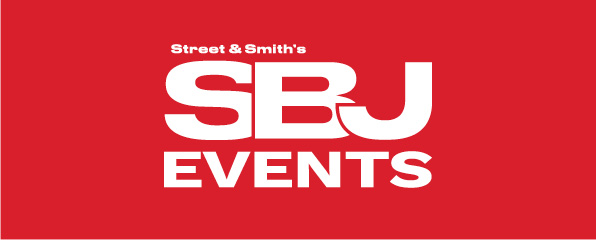Soccer’s Growth in the U.S. Driven by Young, Diverse Audiences
Soccer in the United States is hotter and more popular than ever.
That isn’t opinion. It’s fact.
Driven by a young, diverse and digitally savvy demographic, soccer has grown by leaps and bounds since the 1994 FIFA World Cup was held on U.S. soil and Major League Soccer (MLS) was born two years later. The world’s most popular sport is expected to continue its upward trajectory with this summer’s FIFA Women’s World Cup in Australia/New Zealand as well as the 2024 Copa America and 2026 FIFA World Cup coming to North America.
While pickleball prides itself on being the fastest-growing sport in the U.S., soccer has a much higher ceiling and opportunity to shape the landscape of sports participation, viewership, engagement and consumption in this country.
“With a seemingly endless amount of sports content and programming available these days within seconds at your fingertips, you can’t argue with the data—everything from viewership to attendance, engagement and merchandise sales—that soccer is becoming immensely more popular in the United States, especially among Gen Z and Generation Alpha,” said Michelle Wilson, Isos Capital founder and co-CEO. “It’s time for brands, investors and organizations to continue to stoke this fire that is poised to turn into a roaring blaze with three major events on the horizon, including two occurring in our own backyard.”
Soccer fans are younger and more diverse than general sports fans in the United States, according to Morning Consult. More than half (54%) of the respondents who identified as soccer fans were under the age of 45, compared to NBA (51%), NFL (46%) and MLB (43%). MLS says it boasts the youngest fan base of any men’s pro league in the country.

Photo courtesy of Austin FC
Not only are U.S. soccer fans younger, but they’re also more culturally diverse, with 40% being fans of color, per Morning Consult. MLS reports approximately 30% of its fans are Hispanic or Latino.
That isn’t only true for domestic soccer in the U.S. A 2020 study by Equation Research identified 60 million fans of the Mexican National Team in the U.S., making El Tri the most popular national team in the country. Liga MX, Mexico’s top domestic league, nearly doubled the average U.S. viewership of MLS matches during the 2021 season, while the rivalry and relationship between the neighboring MLS and Liga MX expands further this season with the introduction of the interleague Leagues Cup.
Already boasting the second-largest Spanish-speaking population on the planet behind Mexico—currently 13% of the U.S. population speaks Spanish at home, and estimates are that by 2050 one in three people in the country will speak Spanish—soccer’s popularity is expected to further increase.
As consumers, Latinos in the U.S. currently represent a $1 trillion market, and their spending power is rising—6% compounded annual growth in the last decade, compared to 3% for the non-Latino white population.
b9e0.png)
“Latinos are becoming more influential consumers in the United States and many brands, organizations and leagues are benefitting from that with soccer benefitting the most,” Isos Capital founder and co-CEO George Barrios said. “It will be important to continue to find innovative ways to engage fans on both sides of the MLS vs. Liga MX coin because success for both, in a way, is dependent on the other. A rising tide lifts all boats and we’re seeing it throughout the U.S. when it comes to soccer, whether it’s the success and growth of the MLS, NWSL, U.S. men’s and women’s national teams, Liga MX or European clubs.”
The proof is in the data.
Both MLS and NWSL posted record attendance figures in 2022, with MLS welcoming more than 10 million fans, while the NWSL, which kicked off almost two decades later in 2013, eclipsing the 1 million mark for the first time. MLS continued its record-setting figures when the 2023 season recently kicked off as Atlanta United FC and Charlotte FC became the first two clubs in league history to have an attendance of 65,000+ on the same day, while the league welcomed a record 380,000+ fans opening weekend.
Coming off the heels of its 10th anniversary, the NWSL begins its 2023 campaign more popular than ever. The 2022 NWSL Championship Game was the most-watched game in league history, averaging 915,000 viewers on CBS network in prime time—a 71% increase from the prior year’s title game. National sponsorship revenue increased 87% in 2022 from the previous season, while viewership on Paramount+ jumped by nearly 30%. The league is also buoyed by a recent deal with Electronic Arts, which sees all 12 NWSL clubs included in the EA Sports FIFA 23 video game for the first time.
The NWSL, which is reportedly adding three franchises for the 2024 season at a price between $50-60 million, welcomed Racing Louisville FC, San Diego Wave FC and Angel City FC to the fold over the past two years, with the latter club, backed by a who’s who list of celebrity and athlete investors and owners fitting for Hollywood, poised to become the first women's team with a billion-dollar valuation.
Angel City FC isn’t the only NWSL franchise benefiting from increased investment, especially from big-name backers. Gotham FC welcomed Carli Lloyd, Kevin Durant, Sue Bird and Eli Manning to the club’s ownership group in 2022. Oscar De La Hoya and James Harden are investors in the Houston Dash. Naomi Osaka bought a minority investment in the North Carolina Courage in 2019. Jenna Bush Hager, Chelsea Clinton and Dominique Dawes are minority investors in the Washington Spirit. Patrick and Brittany Mahomes are part of the Kansas City Current ownership group.
MLS, which has tripled the number of its teams since 2004, has seen average club valuations rise 85% to $579 million since 2019 with LAFC valued at $1 billion, according to Forbes.
Coupled with the success of the U.S. men’s and women’s national teams—the USWNT have a record four FIFA World Cup titles—as well as many top American men’s and women’s players playing at premier clubs domestically and abroad, soccer continues to flourish with all eyes firmly fixated on the 2026 FIFA World Cup coming to the continent.
b9e0.png)
At the youth level, more than 810,000 players at the high school level played soccer during the 2021-22 school year.
Highlighted by MLS’ new 10-year, $2.5 billion global rights deal with Apple and the NWSL’s soon-to-be-announced new deal after its current $4.5 million deal with CBS (and an additional $1 million with Twitch) is set to expire after the 2023 season, audiences, sponsors and leagues are well aware of the exponential growth and importance of the beautiful game in the U.S.
Given the growth already experienced in the MLS and NWSL coupled with the rising Latino soccer fan base in the U.S., the upside of team values, league values and soccer-adjacent businesses is significant, putting investors and stakeholders alike on notice.





